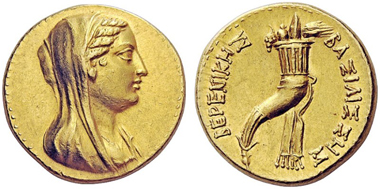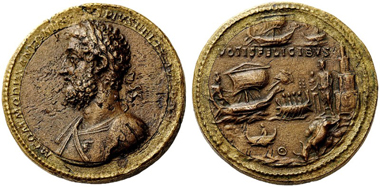20-10-2014 – 01-01-1970
Auction 9
Nomos Auction 9 with superb ancient coins
On 21 October 2014, 10 AM Nomos will hold their Auction 9 at the Zunfthaus zur Saffran, Limmatquai 54, 8001 Zürich. This sale has one of the most varied selections of coins the auction house has ever presented.
It begins with a nice group of ancient British and Celtic issues and then continues on with an extensive series of coins from the Greek world. The Greek series is highlighted by a number of very important pieces, including some wonderful examples from Magna Graecia and Sicily, but also by a fascinating run of silver fractions, deriving from two old European collections, those of a connoisseur who had an especial love for small coins, and that of the late Professor R. Gaupp (1908-1978), who had a passion for the archaic and early classical periods, and, as a professor of psychiatry, was deeply moved by the way the Greeks expressed their beliefs through the symbols on their coins.
A special group of coins from North Africa come from the Battos collection, formed by a European who was forced to leave his home in Libya in 1970, after the expulsion of foreigners that took place following the coup against King Idris. These coins had remained untouched since then and include two unique pieces of great interest.
Turning to Roman issues, there is also a wide selection of interesting pieces, including an exceptional and pedigreed medallion of Commodus and a special collection of provincial tetradrachms. This is followed by a select group of Byzantine, among which is a hitherto unknown hexagram of Constans II, a real surprise for the specialist. Finally, the sale ends with a small but attractive group of Ostrogothic, Visagothic and Merovingian coins.
36. LUCANIA, Metapontum. c. 520-510 BC. Stater. Noe 75 (this coin cited). Extremely fine. From the Escalade Collection, Switzerland, ex Sotheby’s London, 7 March 1996, 34, acquired from Pierre Strauss in 1949 who received it from Jacob Hirsch, from the Jameson Collection, ex Hirsch XVI, 6 December 1906, 91.
A truly outstanding example of the archaic coinage of Metapontum, one of the finest examples of the type known. The curious incuse technique used on a number of the archaic and early classical coinages of Magna Graecia has been plausibly connected to the theories of Pythagoras; in fact it has been suggested that he was responsible for their design. In any case, the design of the coins, especially their borders, is close to contemporary gem cutting (Pythagoras’ father Mnesarchus was a gem engraver). Estimate: 22,500 CHF.
59. SICILY, Syracuse. c. 460/455 BC. Tetradrachm. Boehringer 469 (V252/R338). Good extremely fine, and very rare thus. From the Escalade Collection, Switzerland, ex Numismatica Genevensis 5, 2 December 2008, 41, Leu 72, 12 May 1998, 100, Bowers & Ruddy, Masterpieces of Ancient Coinage, n.d. (1981), 8 and from the Randazzo Hoard of 1980.
This spectacular coin bears a large head of Arethusa that has lost most traces of the archaic formality that characterized the earlier depictions of Arethusa on Syracusan coinage. Her eye is close to being in profile and her face has a distinct character, albeit not an easy one. This piece was one of the latest to enter the Randazzo Hoard, which C. Arnold-Biucchi dated to c. 450, and it is doubtless the finest example of this rare type known. Estimate: 30,000 CHF.
168. ISLANDS off CARIA, Rhodos. Rhodes. c. 404-385 BC. Tetradrachm. Ashton 32. Extremely rare. Extremely fine. From the Höher collection.
This head of Helios is filled with emotion: his eyes radiate understanding, rather than the anger or sadness they appear to have on other dies. The quality of this piece is outstanding – the dies show no sign of wear; and the mint workers used them to produce a coin that is very strongly struck, in high relief and well-centered. Estimate: 30,000 CHF.
186. PTOLEMAIC KINGS of EGYPT. Berenike II, wife of Ptolemy III, c. 244/3-221 BC. Oktadrachm Alexandria. Svoronos 1113. Very rare. Virtually as struck. From the Canonicus collection, ex Nomos 3, 10 May 2011, 156.
Berenike II was the daughter of Magas of Cyrene and Apama and was born c. 267. Soon after her father’s death she married the Macedonian prince Demetrios the Fair but, after finding him in bed with her mother (!) she had him killed and then married Ptolemy III of Egypt. When Ptolemy III was on campaign in Syria she cut off her hair and dedicated it to Aphrodite to ensure his safe return. The hair mysteriously disappeared and was then thought to have been carried up to the heavens where it became known as the constellation Coma Berenices. She was murdered by her mercuric son Ptolemy IV in 221, shortly after the death of Ptolemy III. In some ways the gold coinage of the Ptolemies of Egypt is astounding in its magnificence, and also in how many pieces have managed to survive, especially the oktadrachms of Arsinoe II. Nevertheless, we have to assume that originally the number struck must have been truly enormous and that the vast, vast majority of those issued were long ago melted down and used for other things. The number of Roman, Byzantine and Islamic coins that were struck using the metal from Ptolemaic issues must have been myriad too, though they, in turn, have mostly been turned into other coins as well. Estimate: 50,000 CHF.
253. Commodus, 177-192. Medallion (Bimetallic (copper and orichalcum), Rome, January 190. Rev. Harbor scene. BM Medallions 44 and pl. XXXV, 3 (for the reverse). About extremely fine. From the collections of Barry Feirstein, IV, Numismatica Ars Classica 45, 2 April 2008, 133 and that of L. Benz, Lanz 94.
This medallion was issued for the New Year of 190 and celebrates the relief of the famine, which plagued Rome in 189. This led to popular demonstrations against Commodus’s Praetorian Prefect Cleander: the emperor had him executed to appease the mob, but also made vows to Neptune in order to ensure that grain ships from Egypt would arrive in timely fashion. The ships’ arrival in Ostia, with Commodus making a sacrifice in honor of their safe arrival, is what is shown on the reverse of this exciting piece, which would have been designed and struck in late 189 and distributed on 1 January 190. Estimate: 27,500 CHF.
320. Constans II, with Constantine IV, Heraclius, and Tiberius, 641-668. Hexagram Constantinople , 666-668. DOC -. MIB -. SB -. One of apparently two known examples, and unpublished. Nearly extremely fine.
This astounding novum must have been issued very late in the reign of Constans II: its design is basically the same as that of the late solidi, DOC 42-43 and MIB 41-42, and it must have been struck at the same time. Its extreme rarity indicates that it must have only been struck in very small numbers. Estimate: 12,500 CHF.
For more information and the catalogue please contact Nomos AG through their website.









